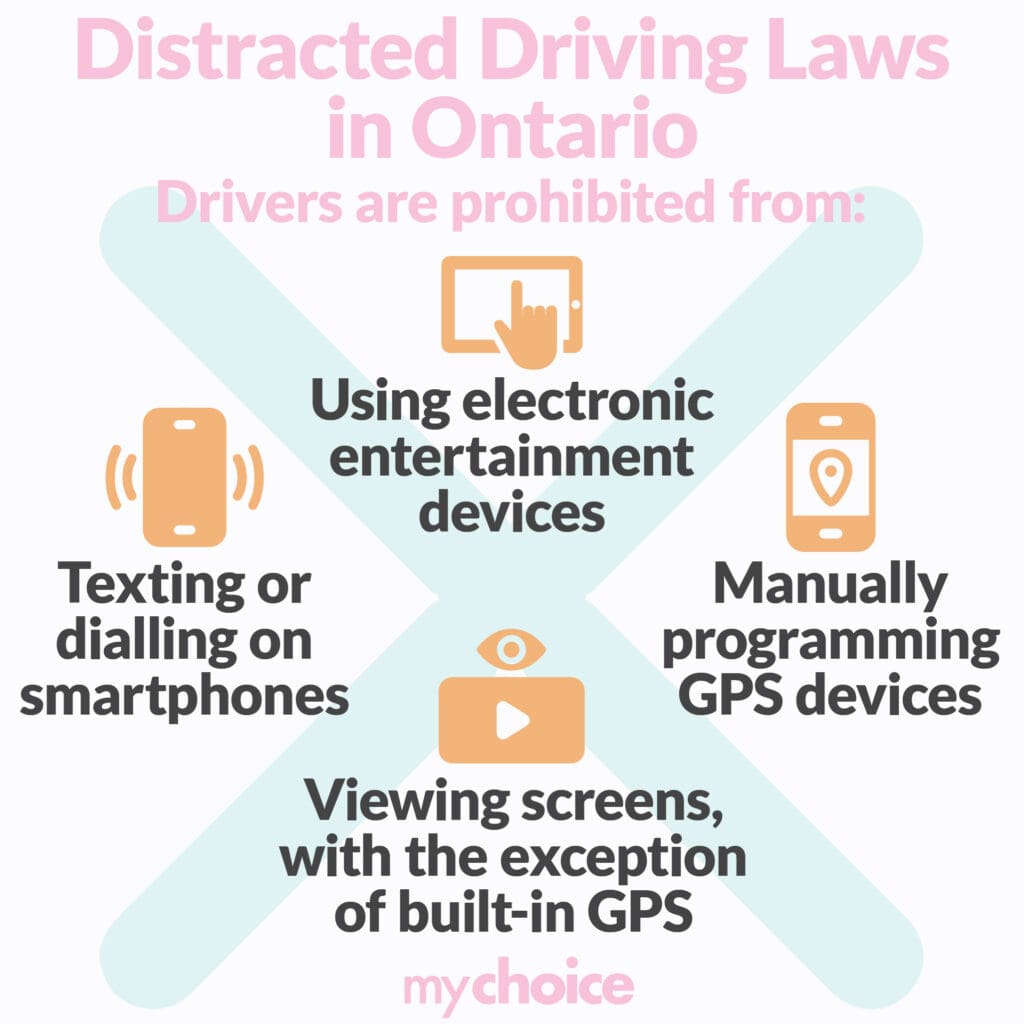Driving with headphones is not illegal in most parts of Canada per se, but that doesn’t mean it can’t land you in a lot of trouble.
Keep reading to learn how driving with headphones can affect you and why you’re better off tuning into your car’s radio (or putting up with a little silence) on your commute home.
Why You Shouldn’t Drive with Headphones On
If you’ve ever been stuck behind the wheel for hours, then you’ll know that tuning into something — be it music or an engaging podcast — can be a real saving grace from boredom and sleepiness. But what if your stereo isn’t working? Or what if you want to kill time by getting on a call? Can you drive with headphones on?
As mentioned, it isn’t exactly illegal to use your headphones while driving. However, Canada is pretty strict about distracted driving — which includes the following acts while driving or stopped at a traffic light:
- Texting, dialling a number, or browsing the web on your phone
- Using electronic entertainment devices like tablets and handheld consoles
- Watching videos
- Programming a GPS (voice command is fine)
- Listening to loud music
So, if you want to put on music, change a song, lower the volume, or take a call on your headphones, you risk getting charged with distracted driving. In fact, the only permissible use of a mobile device while driving is contacting 911.
Distracted driving has been a major problem on Canadian roadways in recent years. The Canadian Automobile Association states that distracted driving is one of the leading causes of collisions, injuries, and deaths on the road. Drivers who drive distracted are believed to be eight times more likely to be in a car crash or near-crash event compared with non-distracted drivers.
As such, distracted driving penalties can set you back anywhere between $600 to $3,000, depending on where you get caught. A distracted driving ticket could also lead to demerit points and license suspension for up to 30 days.

How Wearing Headphones Affects Driving
If you stay off your phone and avoid putting your headphones on and off throughout your entire drive, would it still affect how you drive? Research suggests that merely wearing headphones can lead to distracted driving. Outside of pulling your focus towards your mobile device, wearing headphones while driving can also:
Distracted Driving Laws by Province and Territory
Here’s a brief overview of headphone and distracted driving laws across Canada:
Will Driving with Headphones Affect Your Insurance Rates?
Insurance companies are all about mitigating risks — that’s why they look into your driving record and claims history when calculating your premiums and determine fault when processing claims. The more traffic violations and accidents you have on record, the higher the likelihood that you’ll get flagged as a high-risk driver and face higher insurance rates in the future. High-risk drivers are also in danger of having their policies cancelled and getting rejected by certain companies altogether.
If you’re caught driving with headphones in a province or territory where it’s strictly prohibited, you could see changes in your insurance rates. If you get into an accident while wearing them, your insurer may also deny your claim — even if you’re not at fault. This is because, as previously mentioned, earphones are known to impair one’s ability to hear and react quickly on the road.
How to Listen to Music Safely While Driving
As a driver, you have a responsibility to keep yourself, your passengers, and other people on the road safe. If you want to listen to music safely while driving, follow these tips:
- Before driving off, set your playlist or podcast so you don’t have to touch your phone or music player
- Use Bluetooth to connect your phone or music player to your car’s sound system to avoid having to control your device manually
- Set up voice command on your phone and car GPS to avoid having to pick your phone up or manually program your GPS while driving
- Program your GPS and review the directions before heading out
- Keep the volume low so you can still hear environmental sounds
- Avoid listening to fast-paced music that could make you drive faster, whether consciously or unconsciously
Key Advice From MyChoice
- Distracted driving is a leading cause of car accidents in Canada, so stay focused while driving and avoid any activities that could potentially distract you.
- If you want to listen to music while driving, forgo the headphones. Try your car’s built-in sound system or use Bluetooth speakers instead.
- Make sure to check your province or territory’s distracted driving laws, as penalties and regulations vary significantly across Canada.








